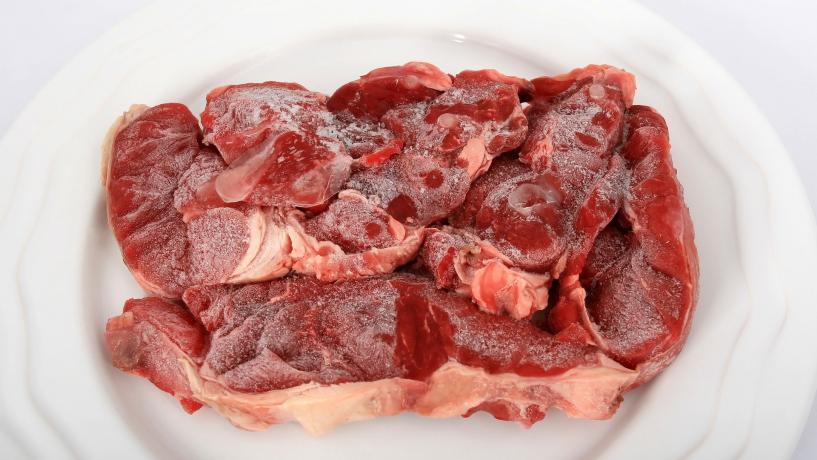
Food businesses are responsible for safely storing food, including dry goods and refrigerated and frozen foods. This safe food storage is essential to maintaining food safety in a food business. If food is not stored properly, food can spoil, become contaminated and cause food-borne illness in customers.
Perishable foods must be kept at the appropriate temperature in order to prevent the growth of harmful pathogens that cause food-borne illness. The growth of harmful pathogens occurs in the Temperature Danger Zone (between 5°C and 60°C). This means that hot food must be kept hot and cold food must be kept cold in order to keep the foods out of the Temperature Danger Zone.
Cold foods must be stored in the refrigerator at 0°C to 5°C and in the freezer at -15°C or below. Aside from being stored at the appropriate temperature, frozen foods must also be stored properly in order to ensure they are not freezer burned.
What is freezer burn?
When food items are frozen in the freezer, the water molecules within the food item form ice crystals. The water crystals migrate from the food item to the coldest part of the freezer, which is often the side of the freezer. This loss of water molecules leaves the food item dehydrated and the end result is what is known as freezer burn.
The causes of freezer burn
Freezer burn can occur for a variety of reasons, but the most common ones include:
- Food not stored properly in the freezer. Food items need to be wrapped tightly and securely so that water molecules cannot escape.
- Food items being stored too long in the freezer. There are appropriate storage times for frozen food. Eventually water molecules will escape frozen food, even when properly sealed and stored. Refer to the AIFS Recommended Food Storage Times Resource for information on how long to store specific food items in the freezer.
- Freezers not maintaining an appropriate temperature of -15°C or below. Freezer burn can occur when a freezer is fluctuating in temperature.
Is freezer burned food safe?
When a food business finds freezer burned food in the freezer, there will be concerns about whether the food is safe to cook and serve. The good news is that freezer burned food is not an issue of food safety. Freezer burned food is safe to eat.
The bad news is that freezer burned food will have lost its texture and taste. This is an issue for food businesses since serving a menu item that tastes off, even if it is safe to eat, will not be appeasing to customers. Food businesses need to be able to identify whether food is freezer burned in order to determine what food should be thrown out for quality issues.
What freezer burned food looks like
Food businesses must know what freezer burned food looks like in order to be able to assess whether to prepare and serve a thawed food item. Here are some visual clues that food from the freezer is freezer burned:
- beef has dry spots on it that look grey or brown
- protein food items are discoloured
- vegetables appear dull and slimy
- packaging is ripped, leaving a part of the food exposed
- there are white spots (ice crystals) on the food item
When to discard thawed food
Sometimes it is better to err on the side of caution when it comes to thawed food. Food businesses should discard thawed food if:
- thawed meat is slimy or dull in texture
- a thawed food item has a strange smell
- there is no label with a date for when the food was frozen
- the food item is frozen in a puddle of water in the freezer
Tips for avoiding freezer burn
Proper storage and temperature control is essential to preventing freezer burn. Food businesses should do the following:
- Ensure that food is sealed appropriately and wrapped tightly.
- Let any excess air out of freezer bags before sealing.
- Let hot food cool down before freezing.
- Label all food items with a name and date before storing.
- Ensure that freezers are operating at the proper temperature of -15°C or below.
- Use frozen food items within the recommended storage time frame.
Cold food storage and food safety training
How to properly store food, including food in the freezer, is key to maintaining food that is safe for consumption and of good quality. The Australian Institute of Food Safety provides training on this, and many other essential food safety topics, through its nationally recognised Food Handler Course.




